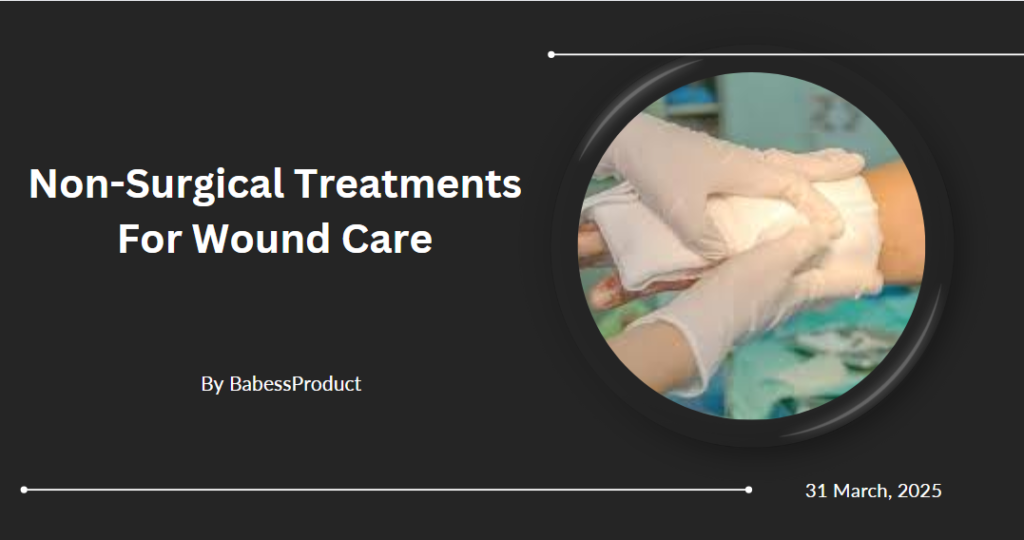Wound care often goes beyond just hygiene. A well-maintained wound can significantly decrease discomfort, reduce healing time, and lower the chances of complications. While severe injuries may require surgical intervention, many wounds can be treated effectively using non-surgical methods. Understanding your treatment options and knowing when to seek professional guidance is key to promoting recovery.
Understanding Wound Care
Wound care is more than cleaning and covering cuts or scrapes. It’s a comprehensive approach to managing injuries that considers their type, depth, and potential for infection. Proper wound care supports healing, reduces the risk of scarring, and minimizes the likelihood of infections. Whether dealing with minor abrasions or chronic wounds, giving attention to wound care is helpful for overall well-being.
Common wounds include burns, cuts, pressure sores, and diabetic ulcers. While some wounds may heal naturally, others require specialized treatments. Non-surgical options provide a practical and effective way to address various injuries.
Treating Wounds Without Surgery
For many individuals, non-surgical treatments offer an accessible way to handle wounds. These methods range from basic home remedies to advanced medical interventions. Here are some widely used non-surgical options:
- Topical Treatments
Ointments, creams, and gels containing antibiotics or healing-promoting ingredients can be applied directly to the wound. These products help keep the area clean and hydrated, which supports recovery. - Dressings and Bandages
Specialized wound dressings, such as hydrocolloid patches or foam coverings, protect the wound from external contaminants and promote an optimal healing environment. Bandages are tailored to specific wounds, offering options that improve airflow or absorb excess moisture. - Debridement
This method involves removing dead or damaged tissue from a wound, which can be performed non-surgically using specialized tools or topical applications. It fosters healthier tissue regrowth. - Compression Therapy
Compression wraps help stimulate blood flow and are often used for venous ulcers or swelling-related wounds. This approach reduces inflammation and encourages effective healing. - Negative Pressure Wound Therapy (NPWT)
NPWT involves placing a vacuum-sealed dressing over the wound. It gently removes excess fluid, reduces swelling, and stimulates new tissue growth. - Physical and Light Therapies
Treatments such as laser or ultrasound therapy promote circulation to aid healing. Light-based technologies are often used for chronic or hard-to-heal wounds.
Each of these approaches helps address the specific needs of various injuries. They allow wounds to heal systematically while prioritizing comfort.
Seeking Expert Guidance
Not all wounds follow the same healing trajectory. When injuries persist or worsen, consulting a medical professional is a pragmatic next step. Pain specialists, in particular, offer a unique perspective. They incorporate a deep understanding of chronic conditions and injury management into their care approach. A pain specialist can assess your wound comprehensively and recommend appropriate non-surgical treatments to alleviate discomfort and accelerate healing.
It’s helpful to seek expert guidance if you encounter the following:
- Signs of infection, including redness, warmth, swelling, or pus
- Delayed healing or worsening of the wound
- Persistent pain at the wound site
- Chronic wounds, such as diabetic ulcers or pressure sores
Early intervention by a professional not only prevents complications but also offers peace of mind during the healing process.
A Path to Support
Caring for wounds doesn’t always require surgery. Non-surgical treatments are flexible and effective in supporting healing, whether through topical ointments, advanced dressings, or therapies like NPWT. Personalizing care to match the type of wound, alongside seeking medical expertise when necessary, lays the groundwork for a smoother recovery. Contact a trusted healthcare provider if you’re dealing with a wound or need guidance on the best treatment options.
Latest Post

